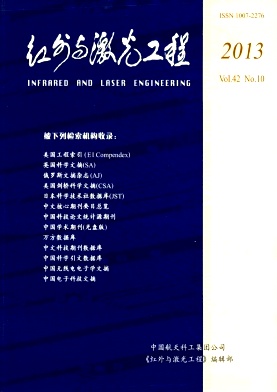Liu Huasong, Liu Jie, Wang Lishuan, Jiang Yugang, Leng Jian, Ji Yiqin. Design of laser antireflection coating on substrate with subsurface damage[J]. Infrared and Laser Engineering, 2013, 42(10): 2737-2741.
| Citation:
|
Liu Huasong, Liu Jie, Wang Lishuan, Jiang Yugang, Leng Jian, Ji Yiqin. Design of laser antireflection coating on substrate with subsurface damage[J]. Infrared and Laser Engineering, 2013, 42(10): 2737-2741.
|
Design of laser antireflection coating on substrate with subsurface damage
- 1.
Tianjin Key Laboratory of Optical Thin Film,Tianjin Jinhang Institute of Technical Physics,Tianjin 300192,China;
- 2.
Military Deputy Office of PLA in China Airborne Missile Academy,Luoyang 471009,China
- Received Date: 2013-02-04
- Rev Recd Date:
2013-03-27
- Publish Date:
2013-10-25
-
Abstract
Subsurface damage (SSD) of optical material is a focal point of research in laser optical field. The existence of SSD of substrates would change the properties of thin film, and the influence of the surface damage in substrates is essential to ansider during the design, manufacture of high precision low loss laser antireflection coating. Physical properties of SSD were studied. And the physical thickness and refractive index gradient of SSD could be retrieved by the spectroscopic ellipsometry of substrate surface. Then the effect of them on reflection spectrum of antireflection coating was obtained by calculation. The depth of SSD affects the reflection spectrum periodically. At last, with depth and gradient of SSD taken into account, the design of laser antireflection coating was revised theoretically, and the numerical experiment shows that the design is possible to realize zero-reflection at 633 nm.
-
References
|
[1]
|
|
|
[2]
|
Paul H D, Edwards J B. Subsurface damage in optical materials: origin measurement removal [R]. DE89001221, 1988. |
|
[3]
|
Feit M D, Rubenchik A M. Influence of subsurface cracks on laser induced surface damage[C]//SPIE, 2003, 5273: 264-272. |
|
[4]
|
|
|
[5]
|
Cmapbell J H, Hwaley-Fedder R A. NIF optical materials and fabrication technologies: an ovevriew [C]//SPIE, 2004, 5341: 84-101. |
|
[6]
|
|
|
[7]
|
Wang J, Maier R L, Burning J H. Surface characterization of optically polished CaF2 crystal by quasi-Brewster angle technique[C]//SPIE, 2003, 5188: 106-114. |
|
[8]
|
|
|
[9]
|
Jue Wang, Robert L Maier. Quasi-Brewster angle technique for evaluating the quality of optical surfaces[C]//SPIE, 2004, 5375: 1285-1294. |
|
[10]
|
|
|
[11]
|
|
|
[12]
|
Ji Yiqin, Liu Huasong, Zhang Yanmin. Test and analysis of optical film constants [J]. Infrared and Laser Engineering, 2006, 35(5): 513-518. (in Chinese) 季一勤, 刘华松, 张艳敏. 光学薄膜常数的测量与分析[J]. 红外与激光工程, 2006, 35(5): 513-518. |
|
[13]
|
Ji Yiqin, Cui Yuping, Liu Huasong, et al. Test and analysis of optics thin film loss[J]. Infrared and Laser Engineering, 2007, 37(3): 505-508. (in Chinese) 季一勤, 崔玉平, 刘华松, 等. 光学薄膜的损耗测试与分析[J]. 红外与激光工程, 2007, 37(3): 505-508. |
-
-
Proportional views

-









 DownLoad:
DownLoad: